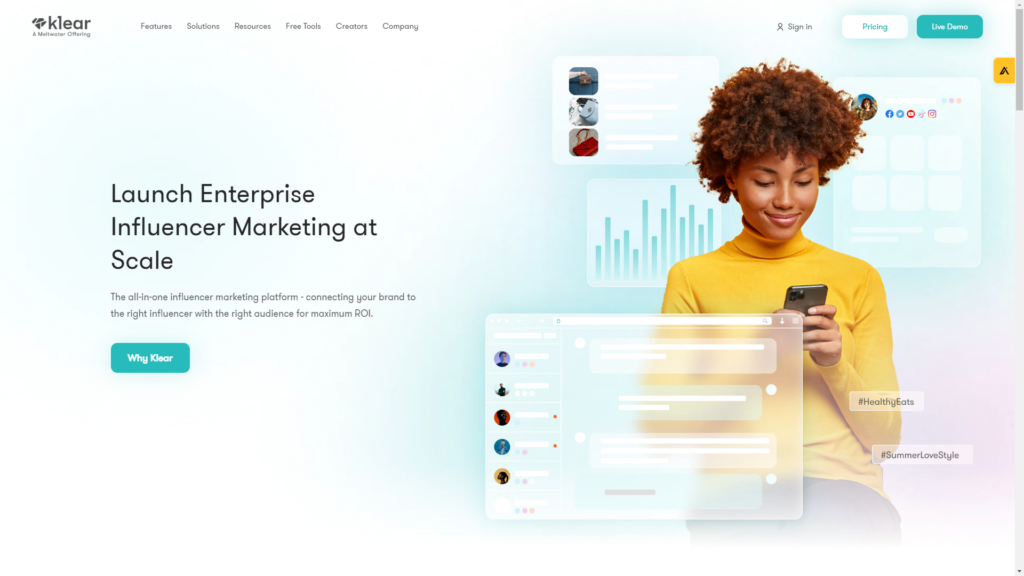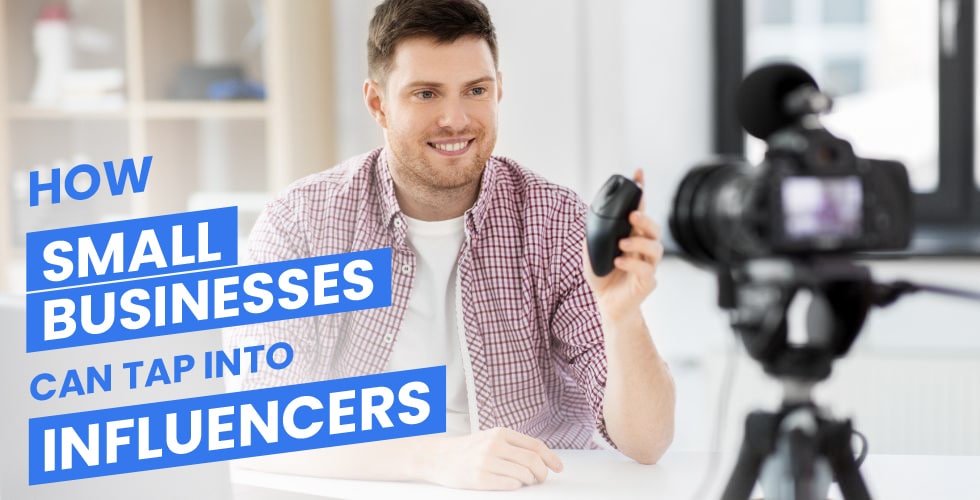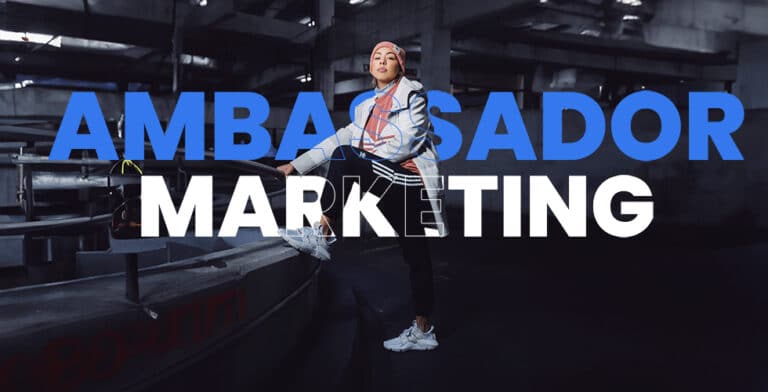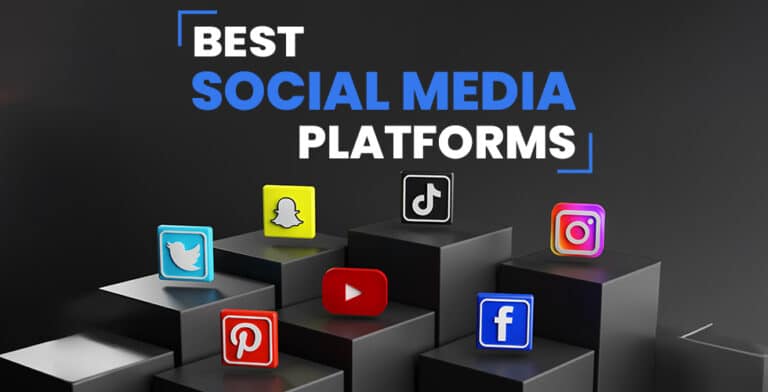Have you wondered how that popular food blogger raving about your homemade cupcakes can skyrocket your bakery’s sales?
That’s the power of influencer marketing – an affordable way for small businesses to reach potential customers. Any small business can drive brand awareness and increase sales through collaboration with niche social media influencers aka micro-influencers, small businesses can drive brand awareness and increase sales.
Unlike celebrity influencers, micro-influencers have more engaged audiences allowing small businesses to leverage their niche communities. This form of marketing harnesses the power of content creators to promote products they love organically to their loyal followers.
But how do you collaborate with an influencer who is aligned with your brand as a tiny business? Let’s start finding the right influencer for your business.
Finding the Right Micro-Influencer for Your Brand
Before reaching a micro-influencer for your small business branding, there are a few things to keep in mind. These include various things like who your product and its consumers are, which influencers are currently popular within that consumer base, what your ideal marketing goals are, etc.
However, here are the first key steps for getting the perfect micro-influencer for small business marketing.
Identify Ideal Brand Ambassadors
Crafting detailed audience personas allows small businesses to pinpoint relevant micro-influencers that closely align with their brand.
Think about your target customers – who they are, their demographics, interests, and passions. Try to find influencers that create content for this audience group and speak their language. They have already built trust and have an engaged following who will likely also enjoy your niche product.
Leverage Influencer Discovery Tools
Sourcing and vetting influencers manually is extremely time-consuming. Leverage influencer discovery platforms like Klear or BuzzStream to discover niche content creators that could be a good fit.

You can search for influencers based on factors like their primary audience, location, topics, engagement metrics, follower size, or channel. This makes narrowing down potential brand collaborators much more efficient for time-crunched small business owners.
Prioritize Authenticity and Engagement
When evaluating prospective influencer partners, authenticity of voice and loyal audience engagement are more essential metrics to consider than follower counts.
Micro-influencers often have extremely engaged niche audiences compared to broad celebrity influencers. Look for influencers with cohesive brand aesthetics, high comment rates, and who personally engage with their followers. This signals passion and is a good indicator of positive campaign outcomes.
Building Relationships with Micro-Influencers
After finding the ideal micro-influencer for your business, try to personalize your communications. This will give the influencer a better idea about your brand and will help a lot in your brand promotion.
Craft Personalized Outreach
Cold outreach to influencers can be daunting for small businesses. Make sure your initial message is thoughtful and personalized. Highlight why you think they are a great fit for your brand. Appeal to the influencer’s interests and past content focused on your product niche. Flattery will get you everywhere. Sincerity and relevance are key – generic outreach will likely be ignored.
Nurture Two-Way Conversations
Moving beyond the initial contact, nurture ongoing conversations to build rapport. This partnership is a two-way street – find ways to support the influencer and not just ask for promotions.
Send new product launches for them to genuinely try. Ask for feedback to improve. Building trust and a friendly relationship will motivate the influencer to organically showcase your brand to their engaged following.
Tips For Communicating With Micro-Influencer
Here are some tips for effective communication with your brand’s ambassador. Following this will help to deliver the best about your brand to the influencer.
- Tailor your communication to each micro-influencer.
- Communicate expectations for collaboration.
- Provide incentives beyond monetary compensation.
- Engage with and appreciate micro-influencers.
- Allow influencers to express themselves authentically.
- Respond promptly and clarify expectations.
- Emphasize genuine experiences over scripted content.
- Acknowledge and promote influencer contributions.
- Track performance metrics to gauge effectiveness.
- Offer constructive feedback for improvement.
Running a Micro-Influencer Campaign
It’s all about setting up the right influencer marketing strategy! The more reliable and authentic your product will seem, the better outcome you will have. Here are the steps for running a successful micro-influencer campaign.
Related: Different Types Of Influencer Marketing Explained.
Set Clear Goals
Before reaching out to any influencers, clearly define your campaign goals and metrics for success.
Do you want to increase brand awareness? Drive traffic to your website? Generate coupon code redemptions or sales? Tracking goals will allow you to analyze campaign performance and optimize future collaborations.

Plan Campaign Initiatives
Brainstorm creative initiatives to collaborate with your influencers. Send them free products to feature in Instagram stories or full reviews and tutorials on YouTube. Develop contests for influencers’ followers.
Compensate influencers with discount codes, affiliate commissions, or monetary gifts in exchange for posts – make sure to stay FTC compliant. Plan out timelines, messaging, and distribution strategies.
Distribute Cohesive Content
Ensure the influencers have brand guidelines on aesthetics, messaging, hashtags, tagging, etc. But allow them creative flexibility to showcase products in their unique style.
Their authentic vibe is what their engaged followers love! Consistent branding and campaign hashtags across the influencer content will help amplify your message and make tracking easier.
Monitor and Optimize
Keep open communication with your influencers during campaigns. Monitor their posts and engagement levels in real-time. See what content formats and messaging work best.
Use those insights to provide constructive feedback to your influencers so you can continue optimizing to boost performance.
Measuring and Optimizing Campaign Success
After running a marketing campaign, it is important to measure whether it was successful. Let’s see what parameters can be used to judge the success of a campaign.
Track Performance Metrics
There are several key metrics small businesses should monitor to determine campaign success:
- Sales/conversions from promo codes or links.
- Website clicks and traffic.
- Engagement rates on posts (likes, comments, shares).
- Brand mentions and hashtag volume.
Analytics platforms like Google Analytics and integrated influencer marketing suites provide campaign performance tracking. Make sure UTM campaign tags are implemented for accurate attribution.

Evaluate What Worked
Dig into the metrics to identify your top-performing influencer content across platforms. See which creators drove the most conversions and engagement. Study their specific posts and tactics that resonated best with their followers. Use these insights to provide feedback to influencers on content that amplifies your goals.
Continuous Optimization
Each campaign provides learnings to optimize future initiatives. Nurture relationships with your top influencers for repeat collaborations. Provide suggestions for improving engagement based on previous posts. Test different content formats, messaging, and products. Try out emerging platforms like TikTok. Continually optimizing based on data will lead to better campaign results over time.
Also, read the difference between social media marketing and influencer marketing.
Conclusion
Micro-influencer marketing can offer tremendous value for small businesses looking to raise brand awareness and drive sales. Small businesses can tap into highly engaged communities passionate about their product or service by strategically partnering with niche social media creators aligned with their target audience.
Authenticity is key – work with influencers who genuinely love your brand and organically share it with their loyal followers. Track performance and optimize campaigns over time based on data-driven insights.
Done right, micro-influencer collaborations provide an affordable way for tiny brands to punch above their weight with customized content that converts potential customers into loyal brand advocates.
Frequently Asked Questions (FAQ)
A. What social platforms should local businesses use?
Ans: Discover platforms where your target audience is active for maximum impact on platforms like Instagram, TikTok, and YouTube.
B. How affordable is influencer marketing for small businesses?
Ans: Influencer marketing offers cost-effective strategies tailored to small business budgets, leveraging micro-influencers and niche collaborations.
C. How can Influencer Marketing help your business grow?
Ans: Influencer marketing can expand brand visibility, reach new audiences, drive sales growth, and enhance brand credibility and authenticity.
D. What are some common pitfalls to avoid in influencer marketing?
Ans: Beware of fake influencers, unclear contracts, audience mismatch, lack of authenticity, and overlooking legal compliance and disclosure.
E. How can small businesses leverage influencer marketing on a limited budget?
Ans: Maximize impact by collaborating with micro-influencers who offer cost-effective solutions, negotiating creative partnerships, and focusing on niche audiences.





